John’s journey: Overcoming adversity to secure a $500,000 Total Permanent Disability (TPD) claim
John’s Journey:Overcoming adversity to secure a $500k TPD Claim Jump to Result This image does not depict our actual client. John’s story In July 2017,
At GMP Law, we have extensive experience in class action lawsuits, amplifying the voices of individuals who have experienced similar harms or losses.
Gerard Malouf & Partners Manage Cases For Clients Across All Areas Of Personal Injury Law, Inheritance Disputes And Superannuation Disputes.
Gerard Malouf & Partners Have Provided Friendly, Experienced Legal Advice To Communities Across Australia For Over 35 Years. Our Personal Injury Lawyers Have Taken On Ten’s Of Thousands Of Cases And We Are Proud To Have Won Billions Of Dollars For Our Clients.
Read Our Latest Articles, Case Studies Or Commonly Asked Questions Concerning Your Legal Claims And Compensation Law.
Our client was an elderly shopper who was attending to a large shopping centre in the South Coast region of New South Wales with his wife. As he was walking into the shopping centre for the purposes of shopping when he tripped on a mobile sign placed within the mall area. The mall area was busy with patrons and the mobile sign was displayed at the bottom.
Our client’s fall was captured on CCTV footage and it was noted from the CCTV footage that earlier in the day the mobile sign had been moved around by the cleaners whilst they were coming through the area cleaning the area. As a result of the fall our client suffered impact to his right knee, right hip, lower back, right shoulder, right wrist, right ankle and an aggravation of previous symptoms, trauma and shock.
We wrote to the shopping centre requesting that we be provided with the incident report and the CCTV footage of the accident. The CCTV footage showed our client and his wife walking into the main entrance of the shopping centre and were near the door when his right foot was impeded by a low-level portable sign. As a result of this, our client lost his balance and fell forward landing on the floor. He was in a great deal of pain and was assisted to his feet by his wife.
We commissioned a liability report from an expert and during his inspection of the area and the CCTV footage he noted that the area is very busy with patrons, the sign had been turned 90° by the cleaner from the shopping centre, the area was within close proximity to a takeaway food outlet with tables and chairs within the main aisle area, the portable sign was promoting the opening of the new store, the base of the portable sign was much wider than the actual sign area, and the base of the sign was light grey in colour and does not stand out from the floor area.
There were no warning signs deployed on or near the aisles and no temporary barriers had been deployed to prevent or discourage patrons from walking within the aisle. He was a regular shopper at the shopping centre prior to the accident. He informed us that this was a new sign and not usually in the location where the incident occurred.
We launched legal proceedings against the shopping centre in relation to our client’s injury and damages. Liability was denied and the shopping centre filed a defence blaming our client for the accident. The opinion of the liability expert was that the sign should not have been placed in this location as it restricted the access and egress within the mall area. Furthermore, the sign was advertising the opening of a shop and could have been placed in an alternative location, such as a temporary hanging sign from the ceiling. He determined that the defendant had not carried out a proper and thorough risk assessment of the shopping centre area in accordance with the workplace health and safety regulations and the sign was a trip hazard and they were negligent in allowing or permitting pedestrians to walk upon the area of the shopping centre aisle in which the incident occurred.
Our client visited doctors and specialists for treatment in relation to his injuries. The diagnosis was that he had suffered a lumbar spine instability which was of a permanent nature and injuries to his mid back, right shoulder and right knee. His prognosis was poor and that he would require further treatment in the future. The injury resulted in a reduced ability to participate in normal social, recreational and domestic activities such as maintenance of the lawns and gardens. He was assessed as suffering from 59% whole person impairment as a result of his injuries from the accident. The legal representatives for the defendant filed their defence blaming our client for not watching where he was walking although this was totally refuted by our client and our liability expert report.
The court ordered the matter be referred to a hearing so that the parties could discuss the liability and medical issues in the matter and the various heads of damages which would likely be awarded to our client as a result of his injuries and continuing disabilities arising from the accident.

Public liability refers to the responsibilities owners or occupants of a public space have to protect anyone who enters. If the owners or occupants fall short of these responsibilities, resulting in an injury, a case for compensation can be made.
Some of the most common incidents covered by public liability law include:
Following an initial meeting, the first task will be to establish the general facts of the case. This will include your medical diagnosis, which will need to be confirmed and documented by a doctor; and proof that the person or company at fault owed you a duty of care, which will need to be demonstrated. Together, this will show that your injury occurred when they breached that duty of care.
From there a further investigation will proceed—contacting and interviewing witnesses, speaking with expert consultants, and more—all in order to bolster the strength of your case even further. Only once this process is complete, and your claim can be demonstrated and proven in full, will the process move on to the next step.
Public liability claims enable you to recoup the financial and emotional costs of suffering an injury due to someone else’s negligence. Defendants regularly offer monetary settlements to claimants, particularly if they acknowledge liability and believe they would lose in court.
But should you accept the settlement or proceed to the later stages of litigation instead, where a judge will have the final decision? Every case is different, but here are some of the factors you may wish to consider before making your choice:
John’s Journey:Overcoming adversity to secure a $500k TPD Claim Jump to Result This image does not depict our actual client. John’s story In July 2017,
Case Overview Our client presented to a vascular surgeon, seeking treatment of her varicose veins in her right leg. Following the surgeon’s recommendation, our client
Case Overview A woman from Green Valley was a passenger in a car when the driver lost control of the vehicle, leading to a collision
Case Overview At the time of her injury, our client was working as a cleaner at a private residence in Kurrajong. During the course of
Case Overview We acted for a client from Western Sydney who was involved in a serious motor vehicle accident. The other driver collided into our
Case Overview We acted for a client from Coffs Harbour who was involved in a serious motor vehicle accident. The driver failed to give way
In the spirit of reconciliation GMP Law acknowledges the Traditional Custodians of country throughout Australia and their connections to land, sea, and community. We pay our respects to their Elders past, present, and emerging, and extend that respect to all Aboriginal and Torres Strait Islander peoples today.


Your location is currently:
Please wait while you are redirected to the right page...